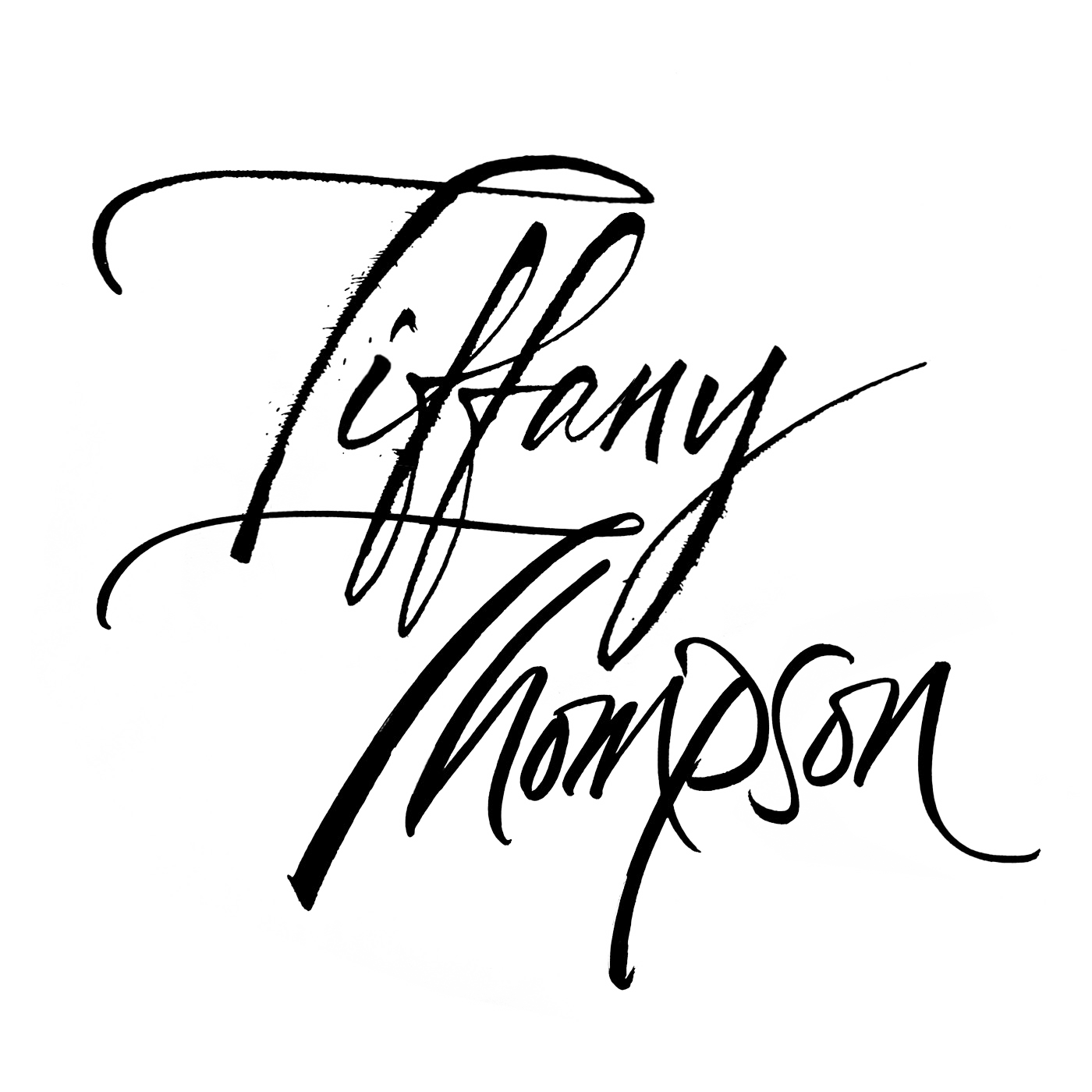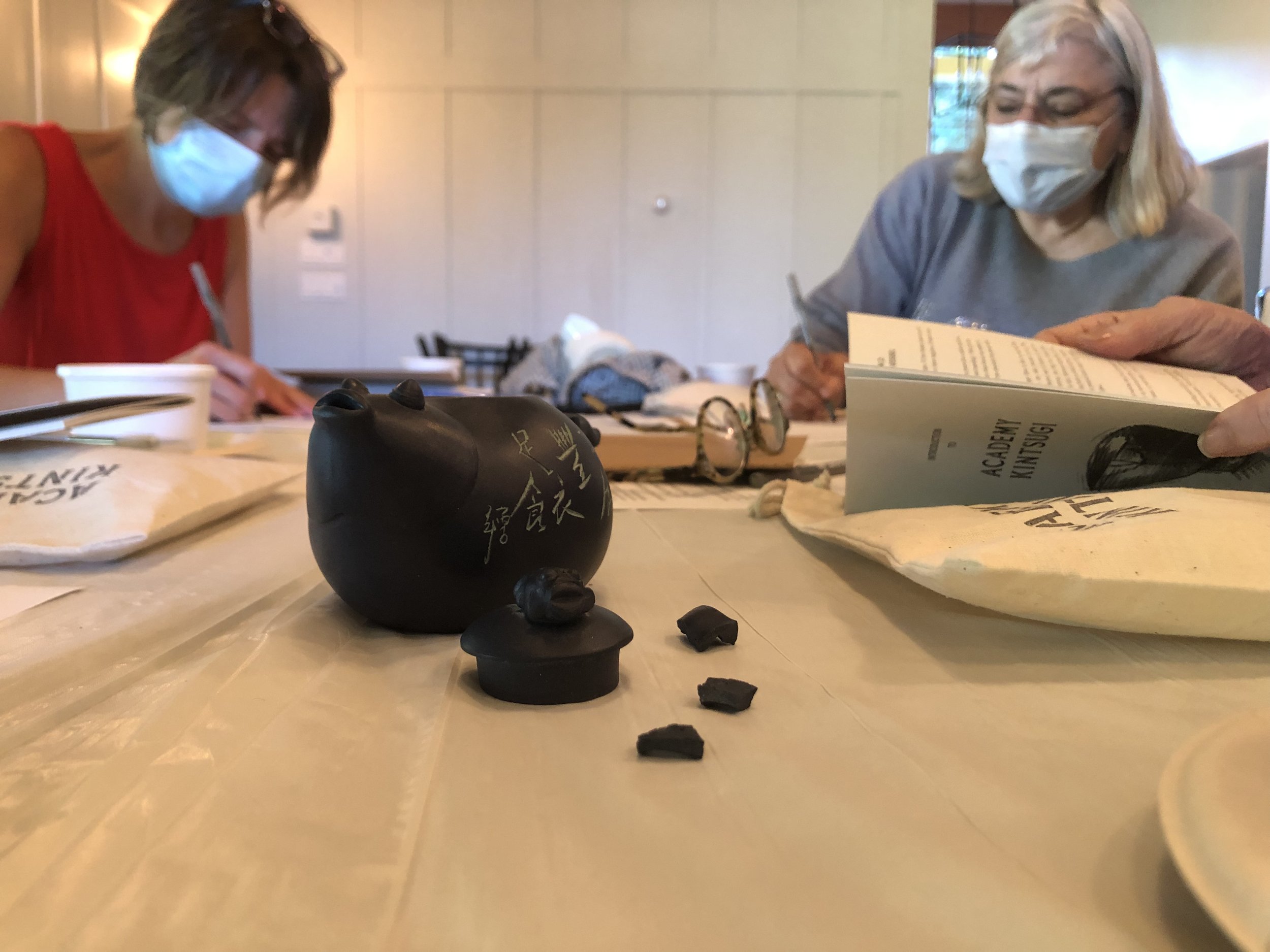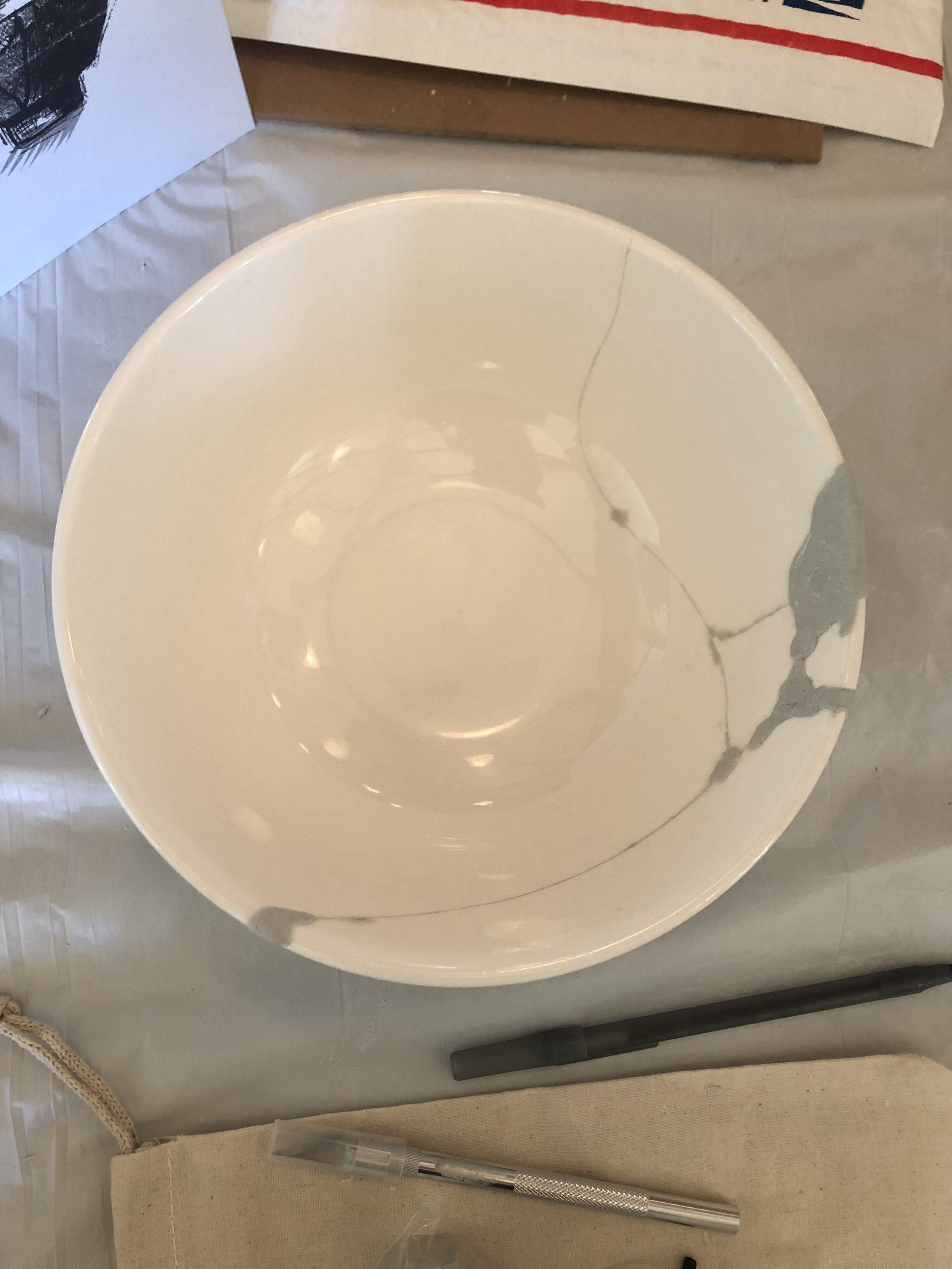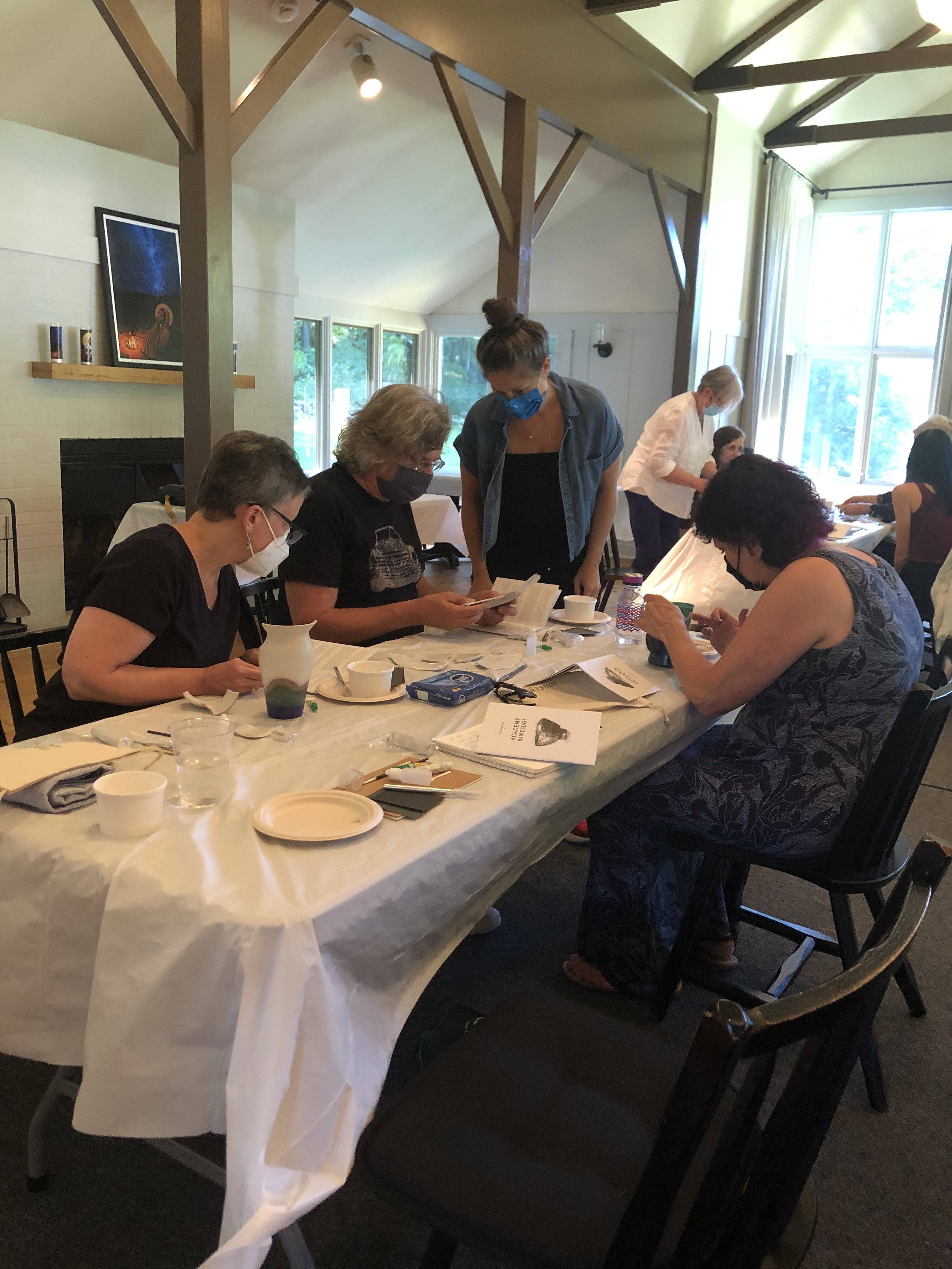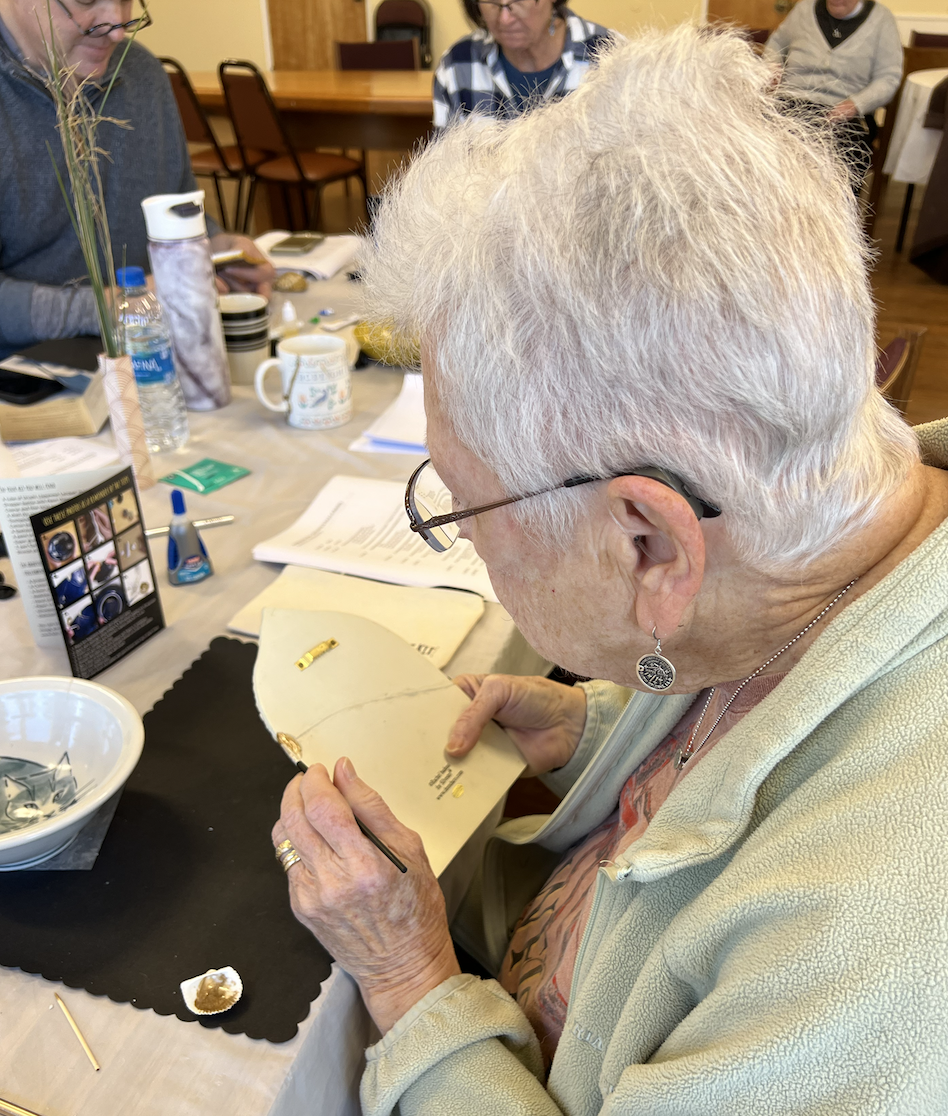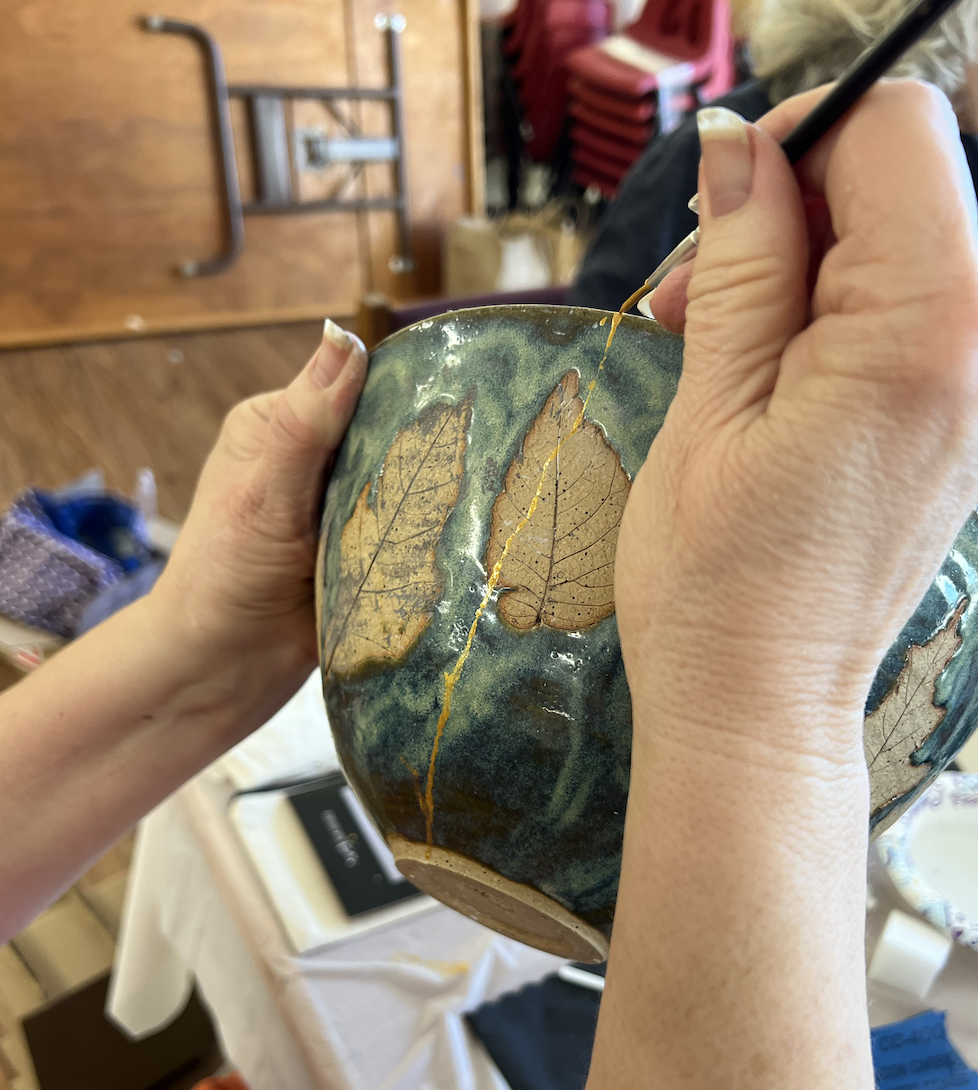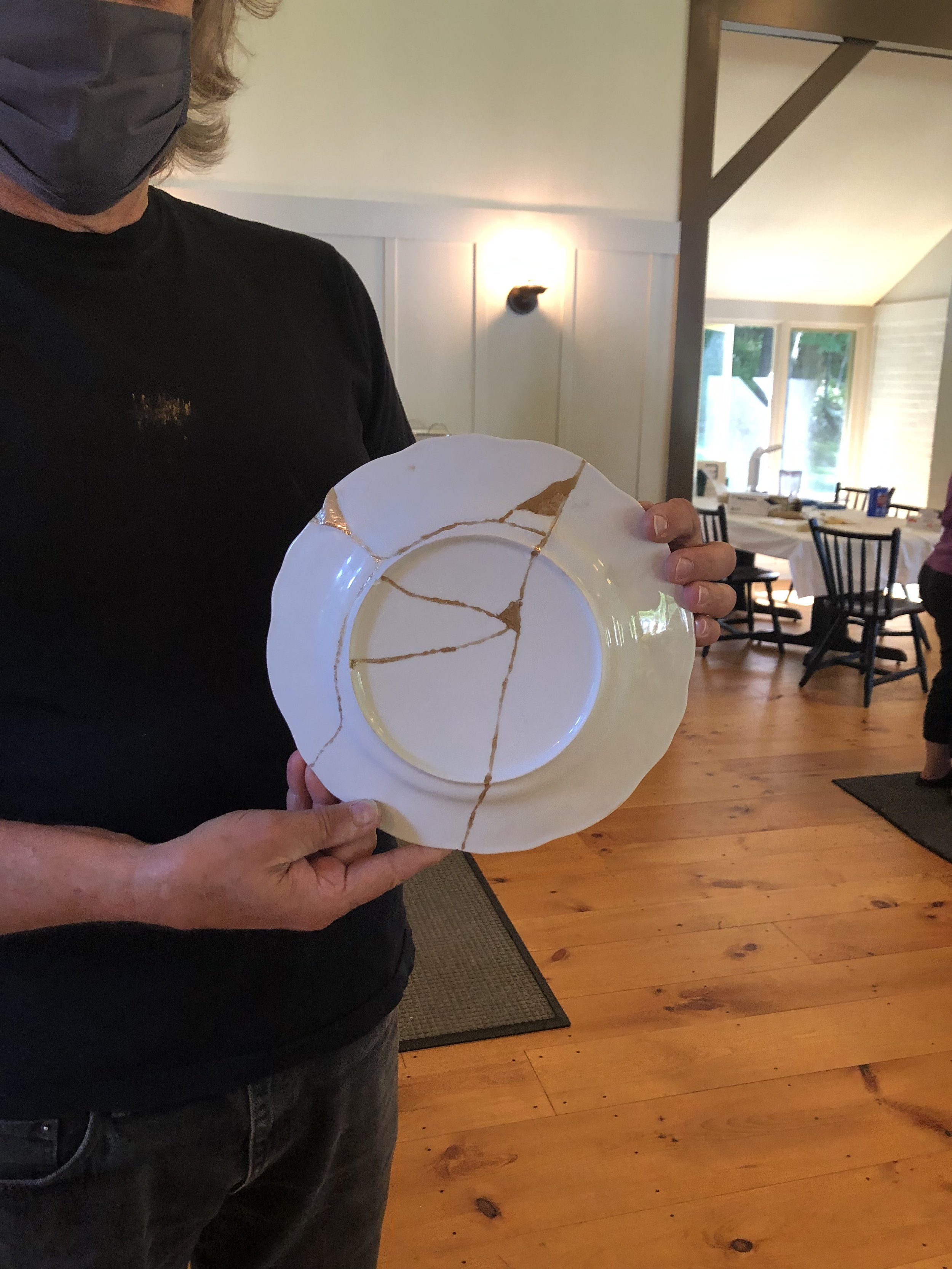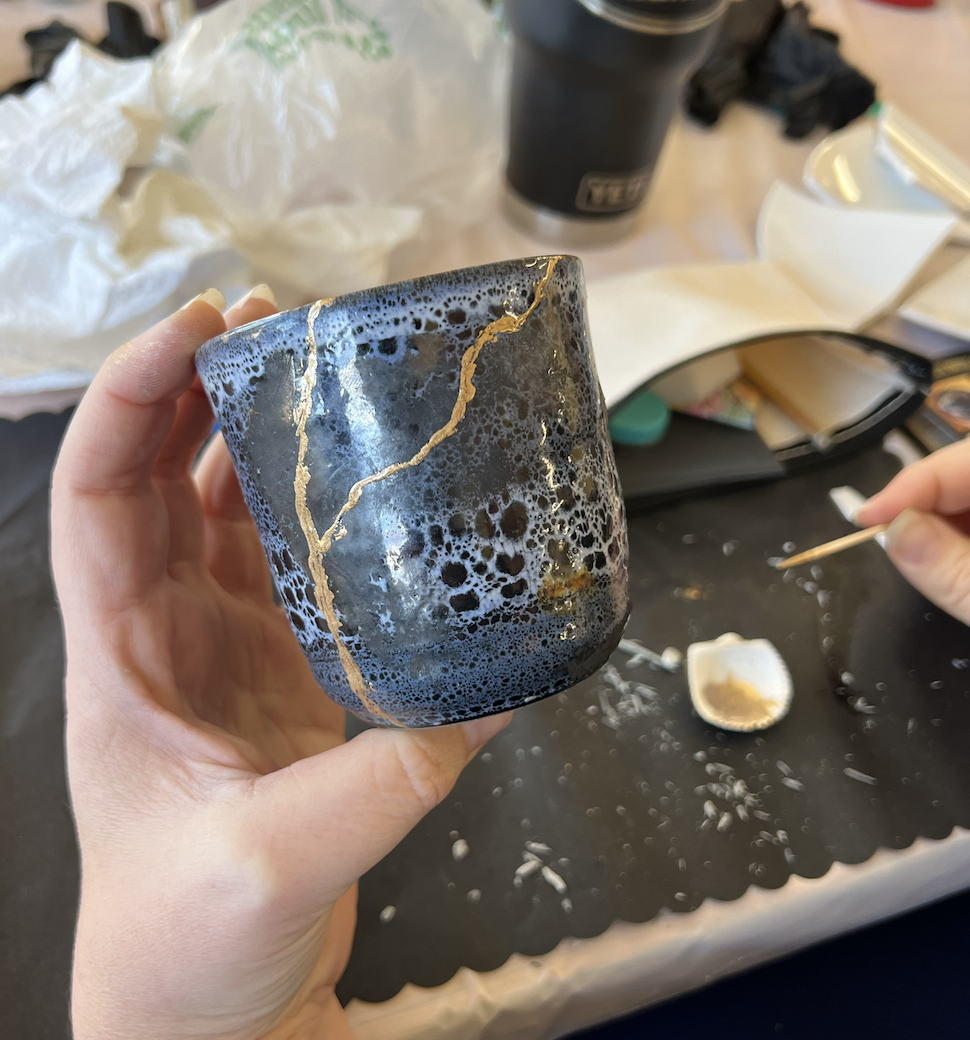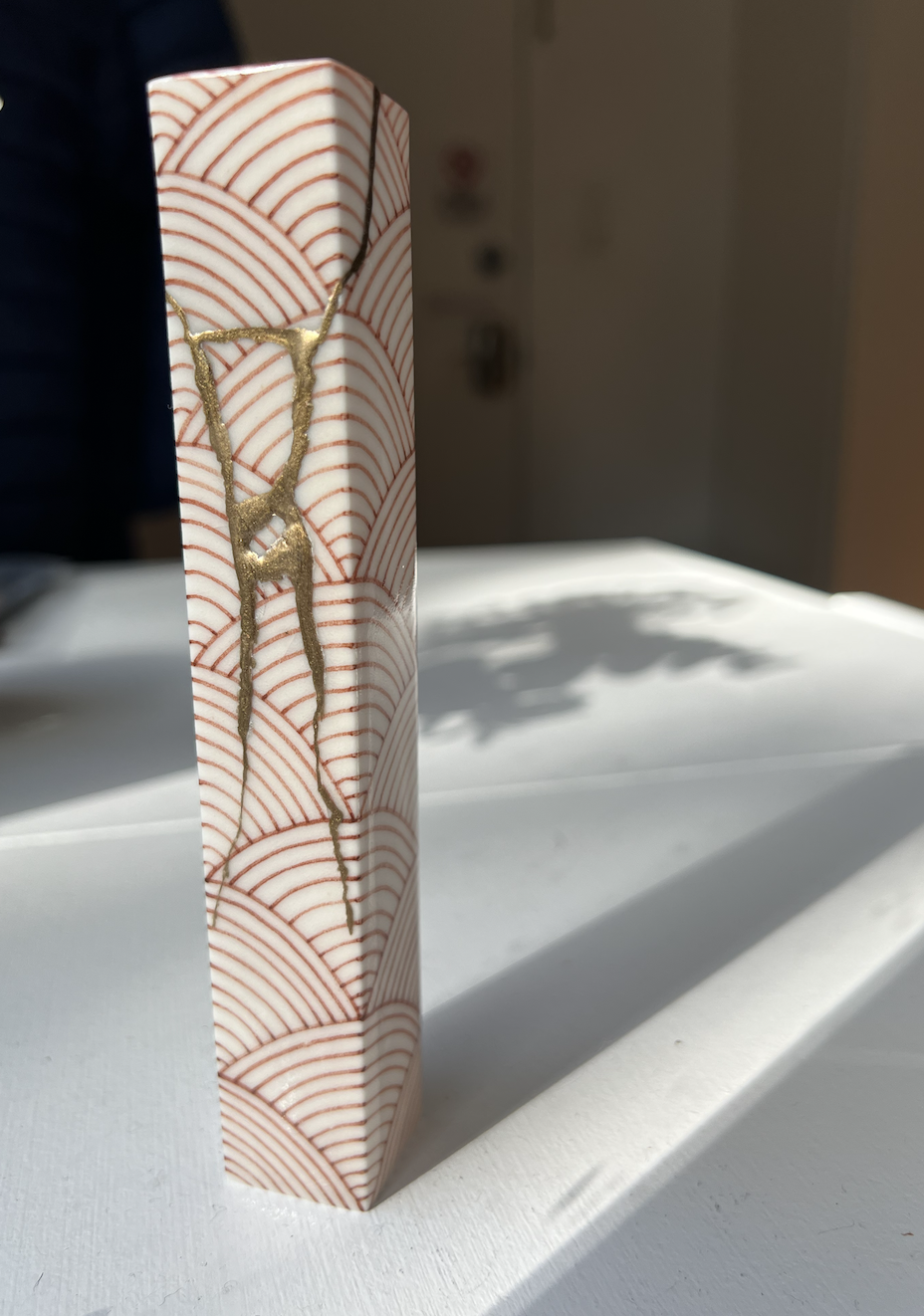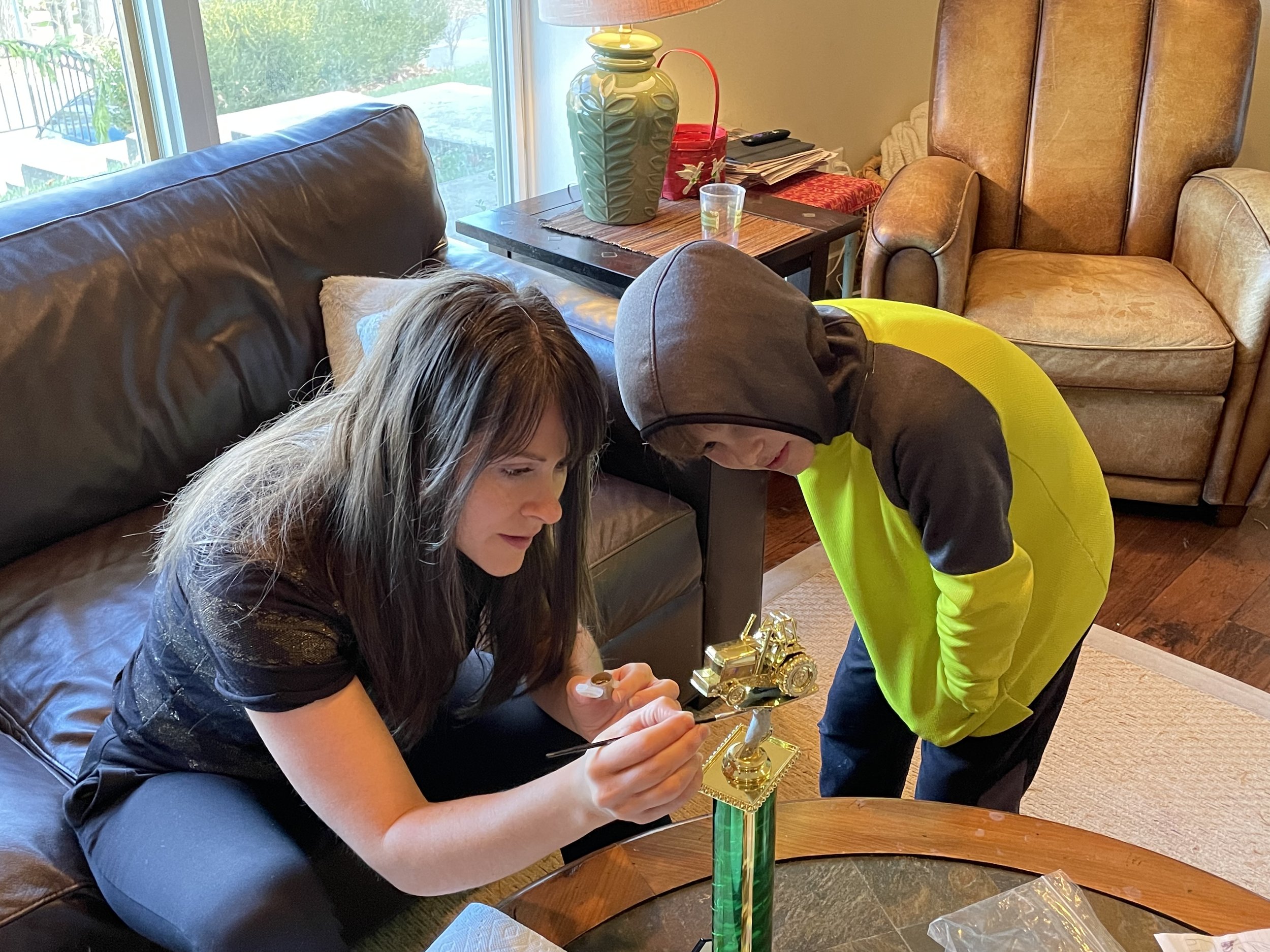“If you are standing here today, you are part of that Kintsugi generation. Someone has poured gold into your brokenness, and you have endeavored to honor that.”
In today’s culture, broken things are usually discarded. Whether with a cracked plate, a broken relationship, or a failed project, our natural tendency is to move forward and reach for something else. However, the ancient Japanese art of Kintsugi offers us a different approach.
Kintsugi became commonplace in late 15th century Japan as a way for families to mend broken teaware. Emerging from the wabi-sabi aesthetic, Kintsugi embraced imperfection and brokenness as the way to a more beautiful creation. The Japanese word “kin" means “gold,” and “tsugi" means “mend.” “Tsugi" also means “to link the generations together.” So by filling cracks with gold, Kintsugi masters turned broken objects into stunning reminders of beauty and strength across generations.
Tiffany Thompson works with hosts to facilitate an interactive evening in which guests learn a contemporary approach to the traditional art of Kintsugi.
Each experience includes:
3 hours of instruction
A live music introduction
Kits for each guest
Hands-on help for each guest's broken item*
Facilitated discussion of the question: What are the fractured and broken areas in my life, community, or society that need mending?
Groups experience:
Decreased stress around failure and critique
Increased emotional connection to each other
Increased creative energy and idea flow
*Many Kintsugi participants find it challenging to find broken pottery, dishes, or mugs in their homes because we just throw them away. Learning to see broken things as items to mend, not throw away, is part of the wisdom of Kintsugi. For those not able to find anything, Tiffany will provide a broken item.
Dear Friend,
Below is a blog I posted about my journey into the art of Kintsugi. It's a reflection on how my past and present are intersecting and an opportunity to share more of my story with you.
Creatively,
Tiffany
Glitter & Glue: My Kintsugi Journey
Growing up, I loved creating. We lived in a small apartment in Moscow, Russia, and on cold winter nights, I would gather supplies for art projects. Elmer’s glue from the kitchen, magic markers from my brother’s desk, sparkles from the craft tub, and wax paper.
With the seriousness of a surgeon, I would uncap a marker, draw a big, blocky letter, and sprinkle glitter along the spine of the shape. Then, I carefully covered it with glue. The slim Elmer’s bottle gave me pin-hole precision.
Next, I waited. If you tried lifting the letter too soon, glitter and glue would ooze out and lead to a quick trash bin burial. It often took days for the glue vapors to dissipate from my room, but when the stench was gone, I knew the piece was ready. With a pancake flipper—at least that’s what I called it—I slowly lifted my letter. The glitter gleamed gloriously, and I showed the creation to the audience of stuffed animals crowding my bed.
Flash forward to my 20s in Washington, DC, and my audience shifted from animals to people and my art supplies changed from glue to guitars. Throughout the 2010s, I released dozens of recordings and performed hundreds of concerts. But a unique collaboration at the end of the decade brought me back in contact with glitter and glue.
It was 2017, and I began collaborating with contemporary painter and author Makoto Fujimura. He invited me to write songs for his exhibit opening on the Upper West Side of New York City, and that experience expanded into a friendship and a vinyl record we released in 2021.
Collaborating with Mako illuminated the connection between sound and color. His Japanese tradition exposed me to artistic concepts and techniques like Nihonga, Noh, and ultimately, Kintsugi. Emerging from the wabi-sabi aesthetic, Kintsugi masters embraced imperfection and brokenness as the means to a more beautiful creation. They would take broken tea ware and mend it with special Japanese lacquer mixed with gold. The Japanese word Kin means “gold,” and Tsugi means “mend.” Tsugi also means “to link the generations together.” So, by filling cracks with gold, Kintsugi masters turned broken pieces into stunning reminders of beauty and strength across generations. Rather than hiding brokenness, Kintsugi illuminates it, showing how what is mended can be more beautiful than before.
Through his visits to Japan, Mako met a modern Kintsugi master, Kunio Nakamura. Nakamura was using special materials to facilitate Kintsugi workshops for kids in towns along the coast that has been devastated by the 2011 tsunami. Kids would bring items salvaged from the ruins of their homes and have a place to somatically process their trauma. Mako resonated deeply with this form because he was in New York City on 9/11 and had spent years processing his Ground Zero trauma through his work. Together, Mako and Nakamura founded Academy Kintsugi to create a Kintsugi generation and raise up a cadre of instructors with the skills and materials needed to bring mending and beauty into broken spaces.
In August 2021, Mako and his wife Haejin, the president of Academy Kintsugi, announced that they were offering a Kintsugi instructor training workshop. I applied and was accepted. The training occurred in New York City on September 11, 2021—the 20-year anniversary of 9/11.
For me, Kintsugi became a metaphor for my life as an artist. Unlike most of my musician friends, I hadn’t been to music school, toured with rock bands, or signed a publishing deal. Instead, I had studied international relations, been an intelligence analyst, and moved from DC to Nashville to New York to try to make music and a living, sometimes even driving for Uber to make creative ends meet. I constantly felt like my career was a fragmented mess. Kintsugi gave me eyes to see that the diverse pieces of my experience could be mended into something imperfect but beautiful.
After becoming a certified instructor, Academy Kintsugi sent me and other instructors to facilitate Kintsugi experiences around the country. From universities to retreat centers, each Kintsugi Experience has been a unique container for people to somatically process the broken pieces in their life, their communities, and our society. I began weaving music into the workshops and found the integration of music and mending was my unique approach to Kintsugi.
In just a year, I have worked with almost a hundred people and their pieces. The more open a person is to the process, the more powerful the metaphorical connections between the physical mending and their soul healing. Kintsugi has given me a new lens through which to see brokenness. Whether looking at a friend’s chipped mug or the hairline fracture in a dinner plate, I often find myself saying, “Can I Kintsugi that for you?” My family and friends know to save their broken things, and a few local cafes even keep their cracked and broken dishes for me. The practice of mending for my community connects me to them and to their broken beauty.
I find it a whimsical twist of fate that one of my earliest memories of making is not music but glue sprinkled with sparkles. Now, I mix glue with copper to mend brokenness with the beauty of glittering gold.
